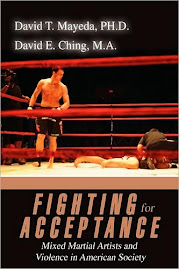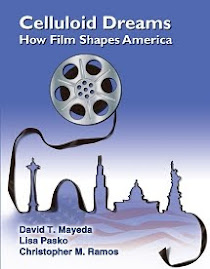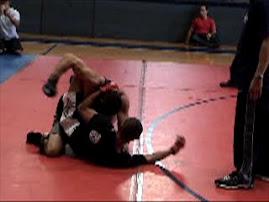So Clint Eastwood's lastest flick, Gran Torino (2008), has been heralded as a wonderful film that casts Hmong actors in its lineup and tells a compassionate story of the Hmong community's plight while it adjusts to American culture. Likewise, it supposedly illustrates a rigid, white male's self-reflection as he matures, and learns to accept his immigrant neighbors of color. Hmmmm, really?
Not so. Gran Torino follows the recycled racist and sexist storylines that have historically been associated with Asians and Asian Americans in American cinema. A quick look at the cast:
Walt Kowalski: The white knight who swoops in to save Sue when she's accosted by the dangerous black men, to teach Thao how to be a "real man," to avenge Thao and Sue from the evil Hmong gang's wrong doings, and to save the entire Hmong community by benevolently sacrificing himself. This guy can whoop ass even in his old age. Within the local context of the film, Walt is the bastion of hegemonic masculinity. A similar blast from the past - Mickey Rourke in Year of the Dragon (1985).

Thao: Good guy, very likeable character, but let's face it, the way Thao is presented follows age-old racist/sexist stereotypes of Asian males. He's occupationally inept, verbally passive, asexual, and physically meek. Even his own family questions his ability to be a male leader. At one point, while role playing on how to be a "real man" with Thao and Martin (Walt's white male barber), Walt says to Thao, "Don't talk about having no job, no car, no girlfriend, no future, no dick, okay, just turn around and go." Of course, Thao does get a job, a car, a girlfriend, and consequently, a dick, courtesy of Walt's meticulous guidance. Couldn't have done it without the white man. A similar blast from the past - Long Duk Dong in Sixteen Candles (1984).

Sue: Also a very likeable character, Sue has quick wit and a defiant tongue. When the three black males harass her, she retorts, "Oh great, another asshole who has a fetish for Asian girls? God that gets so old!" But in the end, when push comes to shove, Sue needs Walt to pull up in his pick up and save the day. Likewise, Sue confronts the Hmong gang, both physically and verbally. Naturally after Walt assaults one of the gang members, Sue is kidnapped and sexually assaulted by the Hmong gang. Thus, one of her key functions in the film is to increase the tension between white knight Walt and the villainous Hmong gang (which is likewise one of Thao's functions). A similar blast from the past - not sure, but there probably is one.

"Spider" and the Hmong gang: "Spider" (far right, kind of cut out in the picture) is cousin to Thao and Sue, and leader of the Hmong gang that assaults Thao twice, kidnaps and sexually assaults Sue, sprays their house with a machine gun, and generally fulfills the role of the devious and extraordinarily dangerous Asian gang. Research has sensationalized the tendency of Hmong gangs to use guns, kidnap people, and rape women without properly contextualizing why these gangs emerge in the first place (Straka, 2003), which has a history of Hmong adolescents' strain in school, limited occupational opportunities, and general poverty (Wang, 2002), not to mention a structural history of global displacement stemming from Hmong people's exploitation by the CIA during the Cold War (Chan, 1994). In any case, the Hmong gang members, like Walt, exemplify a violent masculinity, but theirs is presented in an excessively criminal form (conversely, Walt's violent masculinity is heroic). Similar blast from the past - Jet Li & company in Lethal Weapon 4 (1998) and quite frankly, there are countess examples of this typical Asian male character and/or Asian gangs in American film dating back to World War II (Marchetti, 1993).

Youa: Another likeable Hmong character, but again, one that fulfills a long-standing stereotypical role in American film. She essentially functions as a means for Thao so that he may inch closer towards acheiving hegemonic masculinity. Her character never really develops in the film, except that thanks to Walt's guidance, she and Thao eventually do begin dating. She serves to develop Thao's character as a socially acceptable man. Oh, let's not forget her nick name, "Yum Yum," given to her conveniently by Walt. The only difference between Youa and previous female Asian love interests in American film is that the guy is usually white and she sacrifices her expendable self for him. Similar blast from the past - Suzie Wong in The World of Suzie Wong (1960), and like the Asian gang members, there are tons of similar "Suzie Wong" examples throughout American film history.

Father Janovich: Another benevolent leader in the film, who works with the Hmong community and seeks to counsel Walt. Nothing really wrong with Father Janovich's character, but are we not surprised the other leader in the community is a white male?
African American harassers: Given the racist and sexist stereotypes that abound in Gran Torino, it just seemed all the more fitting to have three black males sexually harass Sue and intimidate away her "Eminem" wanna be white male companion.
The Grumpy Sociologist Conclusion: Audiences are supposed to watch Gran Torino, get all warm and fuzzy, and think, "Oh, that was such an honor to the Hmong community. It really showed how they struggle in America. And what a great guy that Walt was. He really matured throughout the film and did such a great thing to save Thao, Sue and their family from that hideous Hmong gang!"
Well, if that's how audiences interpret the film, THEN THAT'S HEGEMONIC MASCULINITY OPERATING AT ITS FINEST!!! In order to tell its story, Gran Torino relies on the most typically racist and sexist notions of helpless and dangerous Asian immigrants/Asian Americans, juxtaposed against white male saviors that have been presented in American film over and over and over for decades.
[Update 10/8/09: Since almost everyone who comments on here seems to disagree with this post (that's expected since that's precisely what hegemony does), let me ask a subsequent question. If the central minority group profiled in this movie was African American, would people still think the movie wasn't racist/sexist? If Walt was telling a young African American male, he had "no job, no car, no woman, no dick...," honestly, the African American community wouldn't have a problem with the movie? Having a white war vet and a white pastor show African Americans the way wouldn't be a problem? Having white writers, producers, and directors portray African American gangs the way the gangs were shown in Gran Torino wouldn't be a problem? No way, it would have been a political mess. But throw in a bunch of Hmong (a very marginalized Asian/Asian American refugee group), and it's fine and dandy.
Gran Torino reproduces racist and sexist dominant narratives (click on the link if you're not familiar with the concept). It's not just about knowing the writers/directors were aware of Walt's racism and deliberately portrayed that; it's about how he became THE central figure in showing this minority group how to be "appropriately" manly and American; it's about racialized relationships. Again, had the Hmong been replaced with African Americans, this movie would not have gotten a pass. Throw in a less well known and politically disempowered Asian American group, and people love it.
Citations:
Chan, S. (1994). Hmong means free: life in Laos and America. Philadelphia: Temple University Press.
Marchetti, G. (1993). Romance and the “Yellow Peril”: Race, Sex, and Discursive Strategies in Hollywood Fiction. Berkeley: University of California Press.
Straka, R. (2003). Violence of Hmong gangs and the crime of rape. FBI Law Enforcement Bulletin, 72, (2), 12-16.
Wang, J. Z. (2002). Preliminary profile of Laotian/Hmong gangs: a California perspective. Journal of Gang Research, 9 (4), 1-14.


 Many of you will undoubtedly recall the re-enactment of Michael Jackson's "Thriller" video seen on YouTube, carried out by inmates at the Cebu Detention and Rehabilitation Center (Philippines).
Many of you will undoubtedly recall the re-enactment of Michael Jackson's "Thriller" video seen on YouTube, carried out by inmates at the Cebu Detention and Rehabilitation Center (Philippines).



















